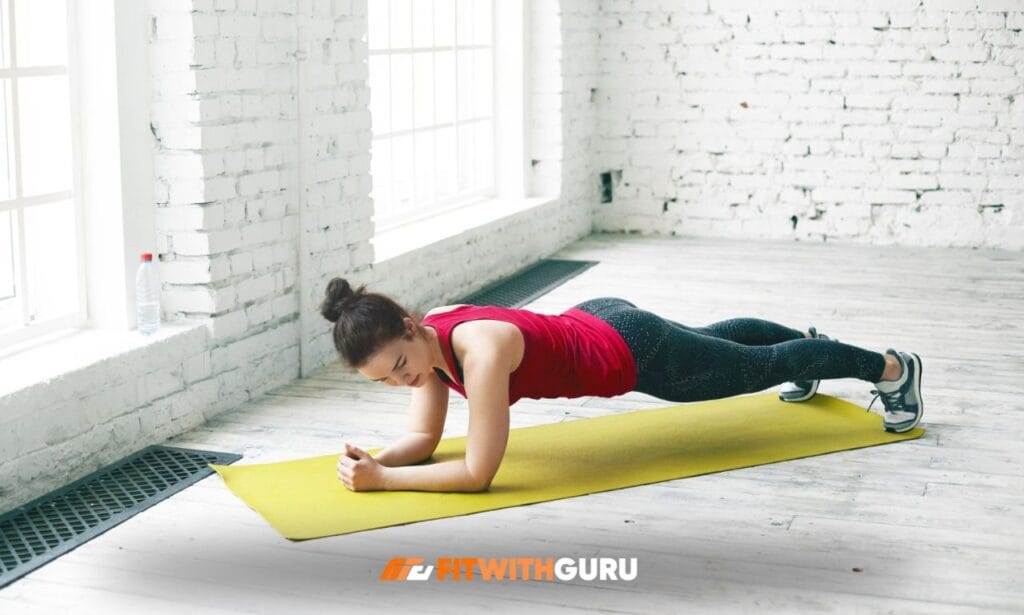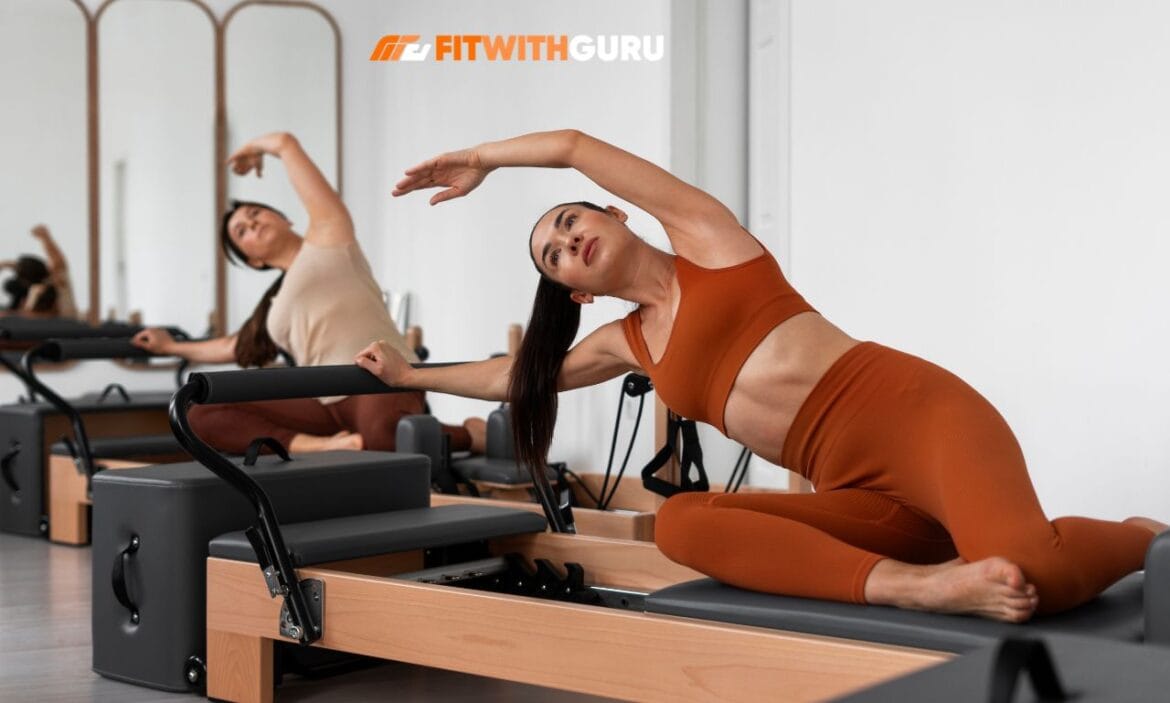Pilates strength training has become a cornerstone for those seeking to achieve a strong, toned physique. Combining the principles of Pilates with strength-building exercises provides an incredibly effective way to enhance muscle tone, improve posture, and increase flexibility.
Whether you’re just starting or are an experienced fitness enthusiast, Pilates strength training can transform your body and help you reach your fitness goals.
In this article, we will explore the best Pilates strength training exercises, their benefits, and tips for incorporating them into your fitness routine. Let’s delve into the world of Pilates strength trainings and explore how it can help you sculpt a strong, toned physique.
What is Pilates Strength Training?
Pilates strength training combines traditional Pilates principles, focusing on core engagement and flexibility, with resistance exercises designed to build muscle strength.
While traditional Pilates is often associated with low-impact exercises, Pilates strength trainings incorporates the element of resistance using equipment such as resistance bands, free weights, and machines like the Reformer. The goal of Pilates strength training is not only to build lean muscle mass but also to improve flexibility, balance, and stability.
It’s a full-body workout that strengthens muscles while promoting length and alignment. The core is always engaged, but the exercises target various muscle groups, enhancing overall muscle endurance and tone.
Why Pilates Strength Training is Ideal for a Toned Body
Pilates strength training is an excellent way to build a strong and toned body, and here’s why:
- Core Engagement
Pilates is famous for its focus on the core, which is central to almost every movement.A strong core stabilises your spine, enhances balance, and supports your posture. - Low Impact, High Efficiency
Pilates strength trainings provides all the benefits of muscle-building exercises without the high-impact stress of traditional weightlifting. This makes it gentler on the joints, yet still highly effective for building strength and muscle. - Improved Flexibility
Pilates emphasizes controlled movements and stretches, which help elongate muscles, increasing flexibility and range of motion. - Long, Lean Muscles
The resistance training in Pilates helps to sculpt muscles without adding bulk. You get lean, toned muscles, enhancing both strength and definition. - Mind-Body Connection
Pilates also focuses on mindful movement, promoting a deeper connection between the body and mind. This mindfulness can reduce stress, improve posture, and help you engage more effectively with each movement.
Top 7 Pilates Strength Trainings Exercises for a Strong, Toned Body
Incorporating a variety of Pilates strength training exercises into your routine will ensure that all muscle groups are engaged. Here are some of the best Pilates exercises for a strong, toned body:
1. Pilates Push-ups
A variation on the classic push-up, a Pilates push-up emphasises controlled movements and core involvement. To prevent your back from arching, start in a plank position and use your core as you lower your body toward the floor. Maintaining a straight body, push back up.
This exercise strengthens and stabilizes the core while targeting the arms, shoulders, and chest.

2. The Reformer Leg Press
Using the Reformer machine, the leg press works your legs, glutes, and lower back muscles. Adjust the resistance of the machine and press your legs in a controlled motion, engaging the core to maintain proper posture and alignment.
The resistance provided by the Reformer helps to build muscle endurance and strength in the lower body while maintaining flexibility.
3. Side-Lying Leg Lifts
Side-lying leg lifts target the outer thighs, hips, and glutes. With your legs straight out in front of you, lie on your side. Ensure your core is engaged to maintain body stability as you raise one leg at a time. Adding ankle weights or using a resistance band can increase the exercise’s challenge.
4. Plank with Leg Lift
The plank with leg lift is an advanced variation of the standard plank. In this move, you hold a plank position and alternately lift one leg at a time while keeping your body stable. This targets the core, shoulders, glutes, and legs, making it a full-body strength exercise.
5. Pilates Squats with Resistance Bands
Squats are a fantastic lower-body exercise, and adding resistance bands increases the intensity. Maintain a straight back and an active core as you squat down with your feet shoulder-width apart. The resistance from the bands will help activate the glutes and legs while improving balance and stability.
6. Swan Dive
The Swan Dive is a great way to strengthen your shoulders, core, and back. Start by lying face down on the mat, lifting your chest off the floor, and extending your arms in front of you. From here, rock your body forward and backward, engaging your core to control the movement.
This graceful exercise helps improve flexibility in the spine while strengthening the back muscles.
7. Pilates Rowing Exercises
Rowing exercises, often performed with the Reformer or resistance bands, work the upper back, arms, and shoulders. These movements not only help sculpt the arms but also enhance posture by targeting the muscles that support your spine.

How to Get the Most Out of Your Pilates Strength Training Routine
To maximize the benefits of Pilates strength training, here are some essential tips to follow:
1. Be Consistent
Like any workout routine, consistency is crucial for seeing results. Aim for at least three to four Pilates strength training sessions per week. This frequency allows your muscles to recover and grow stronger while maintaining steady progress.
2. Focus on Proper Form
Form is critical in Pilates. Using the appropriate technique reduces the chance of injury while guaranteeing that you’re using the right muscles. Always engage your core during exercises and move through each motion slowly and deliberately.
3. Gradually Increase Intensity
Start with beginner-level exercises and progress to more challenging moves as your strength and skill improve. Gradually increasing resistance or the number of repetitions will help you continue to build strength and muscle.
4. Incorporate Cardio for Fat Loss
While Pilates helps build muscle and tone, combining it with cardiovascular exercises will help reduce body fat and reveal the muscle definition you’ve worked hard to develop. Activities like running, swimming, or cycling can complement your Pilates routine.
Common Mistakes to Avoid in Pilates Strength Training
While Pilates strength training is highly effective, it’s important to avoid common mistakes that could hinder your progress or cause injury.
1. Pushing Too Hard, Too Fast
It’s tempting to push yourself to the max, but overexerting yourself can lead to burnout or injury. Workouts should be started slowly and progressively increased in difficulty.
2. Neglecting Core Engagement
Many Pilates exercises require core activation to be effective. Forgetting to engage your core reduces the exercise’s effectiveness and increases the risk of straining your back or neck.
3. Skipping Warm-Up and Cool-Down
Warm-ups and cool-downs are essential parts of any workout, especially in Pilates. Warming up prepares your muscles for movement, while cooling down helps your muscles relax and recover after intense activity.
4. Not Using Proper Breathing Techniques
Breathing plays a significant role in Pilates. As you prepare for the exercise, take a deep breath, and as you contract your muscles, release them. Breathing correctly reduces needless strain and promotes muscle engagement.
Frequently Asked Questions (FAQs) About Pilates Strength Training
1. Can Pilates Strength Training Help Me Lose Weight?
Yes, Pilates strength training can aid in weight loss by increasing muscle mass and boosting your metabolism. When combined with a healthy diet and cardiovascular exercise, Pilates can help you burn fat and reveal lean muscle.
2. Is Pilates Strength Training Suitable for Beginners?
Absolutely! Pilates strength training is accessible to beginners and can be tailored to your fitness level. Begin with simple exercises and work your way up as your strength and confidence increase.
3. How Long Does It Take to See Results from Pilates Strength Training?
Results vary depending on your consistency, diet, and fitness level. However, with regular practice, you can expect to see improvements in muscle tone, strength, and posture within four to six weeks.
4. Do I Need Special Equipment for Pilates Strength Training?
While some Pilates exercises require equipment like the Reformer machine, many exercises can be performed using just a mat and resistance bands. As you progress, you may choose to incorporate additional equipment to increase the intensity of your workouts.
5. How Often Should I Do Pilates Strength Training for Best Results?
For the best results, aim to practice Pilates strength training at least 3-4 times per week. Be sure to allow adequate time for recovery between workouts.
Conclusion
Pilates strength training is an excellent way to build a strong, toned body while improving flexibility, balance, and overall body awareness. By incorporating resistance exercises with traditional Pilates movements, you can create a well-rounded workout that promotes muscle strength and endurance.
With consistency, dedication, and proper form, Pilates strength training can transform your physique, offering lasting benefits for both the body and the mind.
Whether you’re looking to enhance your core strength, improve posture, or build long, lean muscles, Pilates strength training is a powerful tool to help you achieve your goals.

